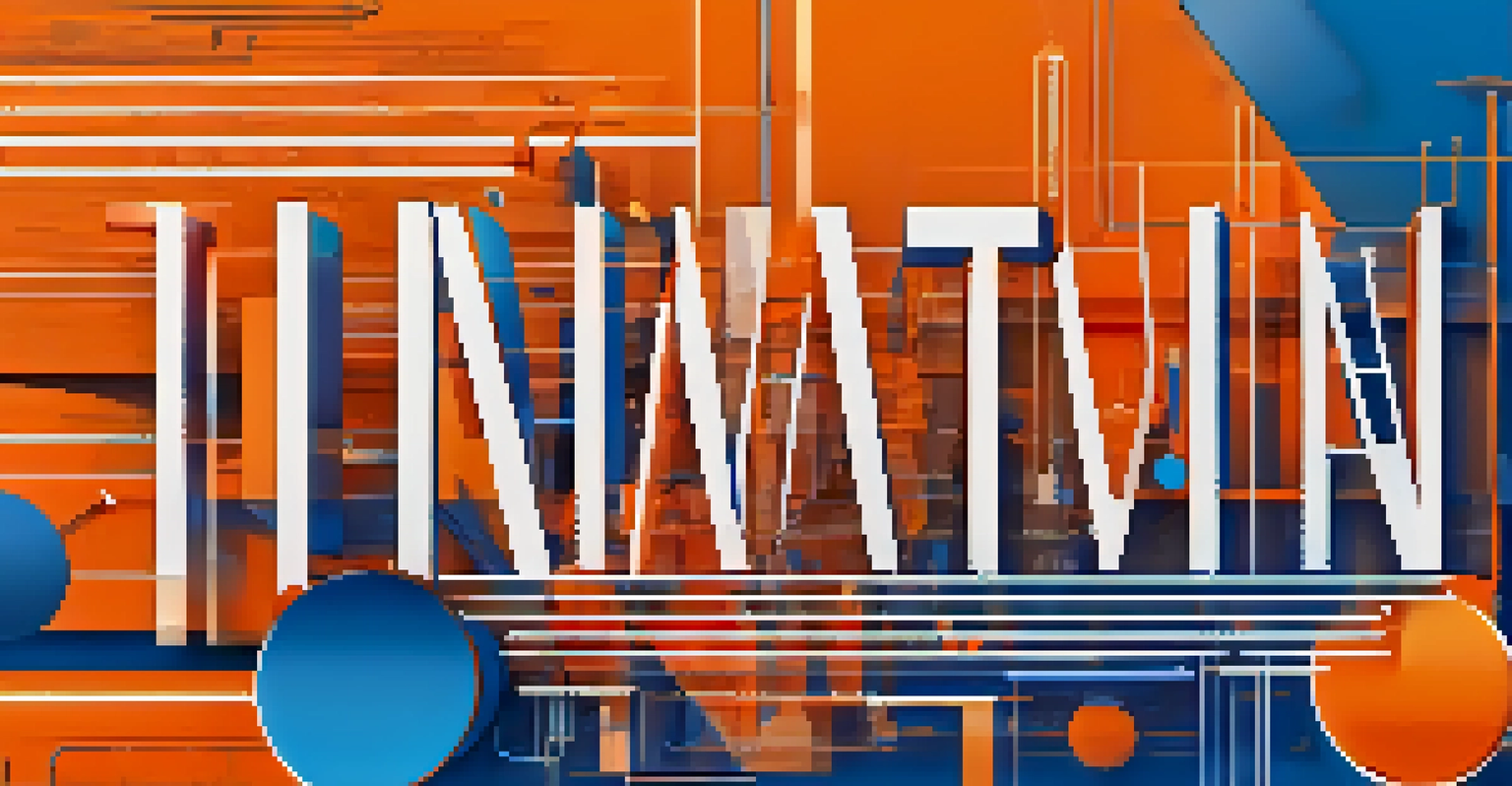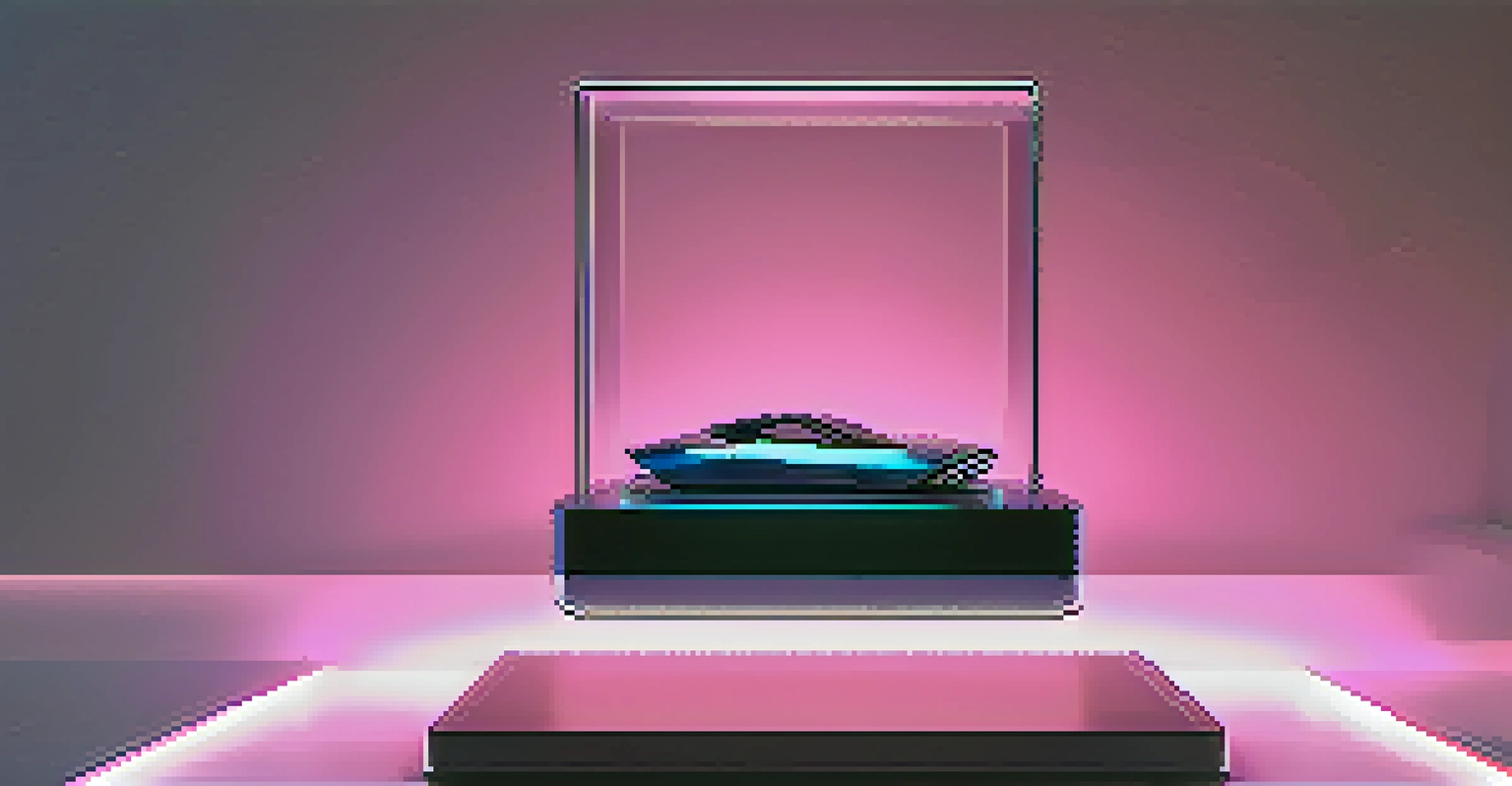Graphic Design Trends: Navigating the Digital Art Landscape

The Rise of Minimalism in Graphic Design
Minimalism continues to dominate the graphic design landscape, emphasizing simplicity and functionality. By stripping away unnecessary elements, designers create a cleaner, more focused aesthetic that resonates with audiences. This trend is not just about less being more; it’s about communicating messages effectively and efficiently.
Simplicity is the ultimate sophistication.
Many brands are adopting minimalist designs to convey clarity and professionalism. For instance, tech companies often use minimalism to suggest innovation and forward-thinking. This approach helps users navigate websites and apps easily, enhancing their overall experience.
Related Resource
However, achieving true minimalism requires skill. It’s essential to find the balance between simplicity and visual interest, ensuring that designs remain engaging without being overwhelming. Designers must carefully choose colors, typography, and layouts to maintain this equilibrium.
Bold Typography: Making a Statement
Bold typography has emerged as a powerful tool in graphic design, allowing brands to express their identity creatively. Larger font sizes and unique typefaces can draw attention and create a memorable impact. This trend reflects a shift towards typography being a central design element rather than just an afterthought.

For example, websites and advertisements increasingly feature eye-catching headlines that demand attention. This not only helps in branding but also guides the viewer's eye to key messages or calls to action. When done right, bold typography can evoke emotions and create a connection with the audience.
Embracing Minimalism in Design
Minimalism emphasizes simplicity to effectively communicate messages and enhance user experience.
However, it’s crucial to use bold typography judiciously. Overloading designs with too many bold elements can lead to chaos, detracting from the intended message. Designers should focus on creating harmony between text and other design elements to achieve a cohesive look.
Vibrant Colors and Gradients: A Visual Feast
Color plays a pivotal role in graphic design, and recent trends show a preference for vibrant hues and dynamic gradients. These lively palettes help brands stand out in a crowded digital space, evoking emotions and attracting attention. Gradients, in particular, add depth and dimension, making designs more visually appealing.
Design is not just what it looks like and feels like. Design is how it works.
Consider how many social media platforms use gradients in their logos and interfaces. This choice not only modernizes their branding but also creates a sense of energy and youthfulness. Vibrant colors can also enhance user engagement, encouraging users to interact with the content.
Related Resource
As with any design element, balance is essential. While bright colors can energize a design, too much can overwhelm the viewer. Designers should strategically incorporate colors to complement other design aspects, ensuring a harmonious overall effect.
3D Design: Adding Depth and Realism
3D design is gaining traction in the graphic design world, offering a fresh perspective and a sense of realism. With advancements in technology, designers can create stunning 3D visuals that captivate audiences and elevate brand narratives. This trend brings depth to digital art, making it more immersive and engaging.
Brands utilize 3D elements in everything from product packaging to promotional materials, enhancing the overall user experience. For instance, interactive 3D graphics on websites allow users to explore products in a more engaging manner, ultimately leading to increased conversions.
Bold Typography Stands Out
Using bold typography as a central design element helps brands create memorable impacts and guide viewer attention.
However, incorporating 3D design comes with its challenges. Designers must ensure that these elements do not detract from usability or accessibility. The key is to strike a balance between creativity and functionality, ensuring that 3D features enhance rather than complicate the user experience.
Sustainability in Graphic Design: Eco-Friendly Choices
As awareness of environmental issues grows, sustainability has become a significant trend in graphic design. Designers are increasingly opting for eco-friendly methods and materials, reflecting a commitment to social responsibility. This shift not only appeals to conscious consumers but also sets brands apart in a competitive market.
Many brands are now using recycled materials for packaging and promoting designs that minimize waste. This approach can resonate with audiences who value sustainability, creating a deeper connection between the brand and its customers. By highlighting their eco-friendly practices, brands can enhance their reputation and foster loyalty.
Related Resource
However, sustainable design isn’t just about materials. It also involves thoughtful design processes that prioritize longevity and reduce unnecessary consumption. Designers must consider the entire lifecycle of their products, ensuring that their choices contribute positively to the environment.
Interactive Design: Engaging Users Through Experience
Interactive design is transforming the way users engage with digital content, making experiences more immersive and enjoyable. By incorporating interactive elements such as animations, quizzes, and dynamic visuals, designers can capture user attention and encourage active participation. This trend is particularly effective in enhancing user engagement and retention.
For example, many websites now feature scroll-triggered animations that reveal content as users navigate through the page. This not only keeps users engaged but also guides them through the information in an intuitive way. Such interactions can create memorable experiences that encourage users to return.
Sustainability Shapes Design Choices
A growing commitment to eco-friendly practices in graphic design differentiates brands and resonates with conscious consumers.
While interactive design can enhance user experience, it’s essential to prioritize usability. Excessive interactions or overly complex designs can frustrate users, leading them to abandon the site. Designers should focus on creating seamless interactions that enhance, rather than hinder, the overall user journey.
The Blend of Photography and Graphic Design
The integration of photography and graphic design is a trend that continues to flourish, creating visually stunning compositions. By blending real images with graphic elements, designers can produce unique visuals that tell a story and evoke emotion. This hybrid approach allows for greater creativity and expression in digital art.
For instance, many brands are using this technique in their marketing materials to create a more relatable and authentic connection with their audience. By incorporating real-life images, they can humanize their brand and foster a sense of trust. This strategy is especially effective in industries like fashion and lifestyle, where visuals play a crucial role.

However, achieving a harmonious blend of photography and graphic design requires careful consideration. Designers must ensure that both elements complement each other, creating a cohesive visual narrative. Striking the right balance can elevate a design, making it memorable and impactful.